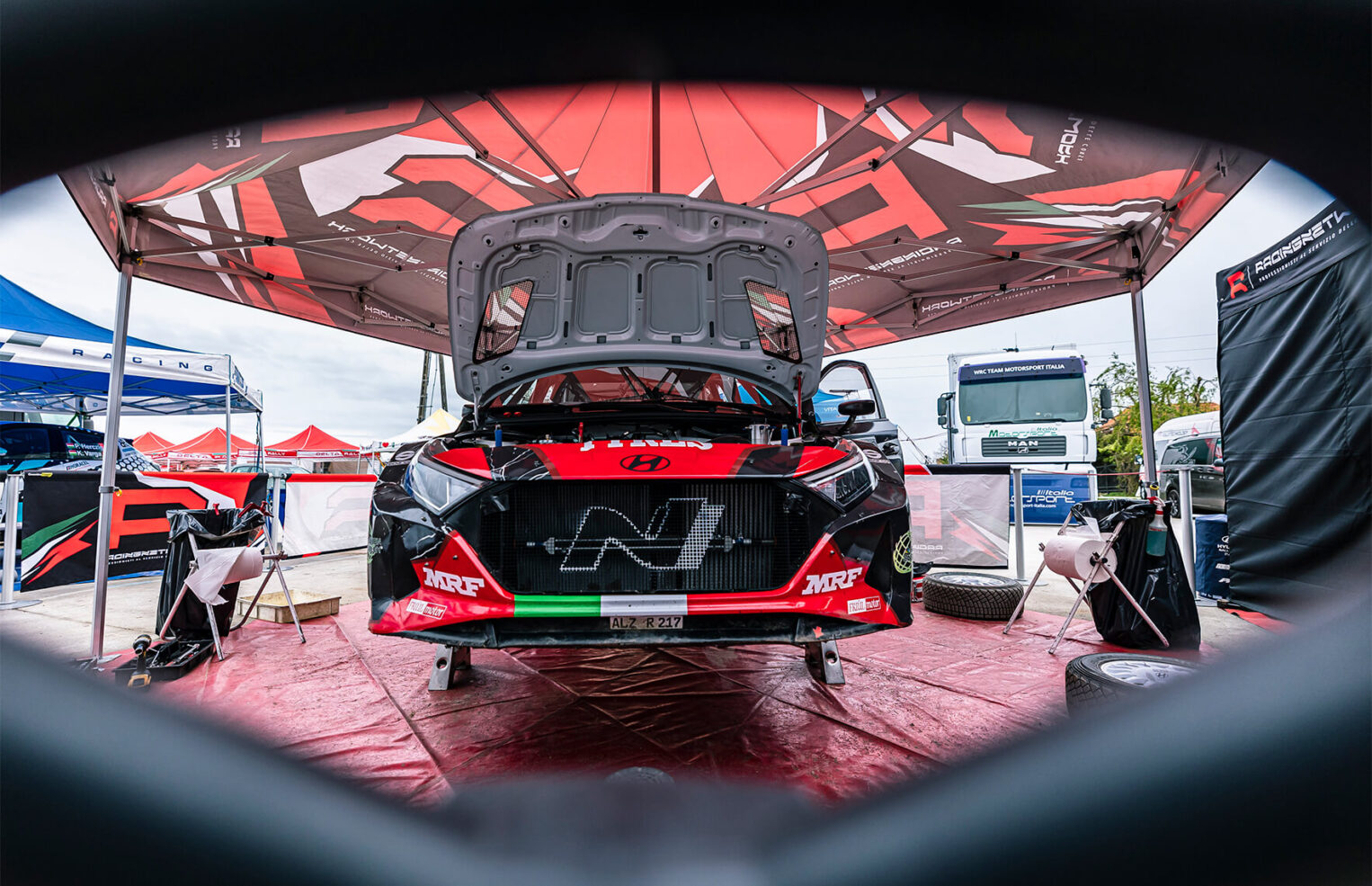This is ERC
This is how ERC works
The interest and commitment from FIA towards the ERC series continues. The goal is a prestigious series with many competitive participants, featuring a large field of local drivers at the various events, as well as a strong international field of top drivers aiming for the overall victory.
ERC is also a clear career path from national level to the world stage, according to the FIA’s Rally Pyramid. Competitors can climb the ranks by gaining international experience in Rally5 or Rally4 cars before moving on to Rally3 and then to ERC’s main competition category, Rally2.

The BAUHAUS Royal Rally of Scandinavia is one of eight rounds, and after last year’s inaugural round, many drivers and spectators are looking forward to Värmland’s contribution with fast, fun stages familiar from Rally Sweden, but now without snow and ice. For those who are new or unfamiliar with rallying, here’s an explanation of how the competitions work.
Drivers, Cars, and Teams
Competitors race not only against each other but also against extreme climates and challenging road conditions. It’s the ultimate test where the most complete driver, the toughest cars, and the best team emerge as winners. But how does it work? Here, we clarify some terms for newcomers to the sport.
In ERC, each event consists of 13–18 special stages. Drivers compete on closed roads, racing from start to finish as quickly as possible. Each driver competes individually with their co-driver, who uses “pace notes” to inform the driver about the road ahead. The fastest time wins the stage, and the times from all stages are combined to determine an overall winner.
The top fifteen places earn ERC points. The overall winner receives 30 points, then it decreases in a descending scale to one point for the fifteenth place.

Shakedown
The competitions start with a Shakedown – a full-speed test on a stage similar to the competition stages, usually the day before the first stage (in the BAUHAUS Royal Rally this year, the first stage takes place on the evening of the same day). Here, drivers get a feel for the surface and track characteristics, and teams can tune the cars for optimal performance under current conditions. For spectators, it’s a bonus where they can see their favourites at full speed multiple times before the real competition begins.
Qualifying Stage
Involves the top-seeded drivers (about 20) running the Shakedown stage against the clock before the competition begins. On tarmac rallies, the start order is based on qualification results. But in gravel rallies, like the BAUHAUS Royal Rally of Scandinavia, the fastest starts last among the qualified. This start order is used for the first day.
Start interval
Special stages range from a few kilometres to several miles and are run individually. The priority, top ERC drivers (Rally2 cars) start at two-minute intervals. Rally3, 4, and 5 cars start one minute apart.
Starting Order
On Thursday and Friday, top-seeded drivers start according to the results of Thursday morning’s Qualifying Stage. On the second day, the top fifteen ERC-Rally2 cars start in reverse order of Friday’s overall standings. Thus, the last-placed starts first and the leader starts last among the top cars.
Between special stages, drivers travel on public roads and follow traffic rules but must adhere to a strict schedule to avoid time penalties.
Re-start
A competitor who retires from a special stage can restart the next day. This means they can continue participating despite retiring from one or more stages. They receive a time penalty for each stage they did not complete.
Power Stage
On the final stage of the competition, extra championship points are awarded to the top five in the highest class, to increase the excitement. The best time on the last stage earns 5 points, second place gets 4 points, third place 3 points, fourth place 2 points, and fifth place 1 point.

Service Park
During the competition, servicing the cars is strictly regulated. Mechanics can only work on the cars during scheduled intervals of 15, 30, or 45 minutes. In between, only the driver and co-driver can touch, work on, and repair the cars. Overnight, the cars are stored in a secure parking area under strict surveillance for both the teams and other interested parties.
Free Entry!
In Karlstad, you’ll find the service park next to Färjestadstravet. Here you can visit the drivers’ and teams’ setups, watch the servicing, and if you’re lucky, chat with your favourite driver. Entry is free, and there are bars and food trucks available.
